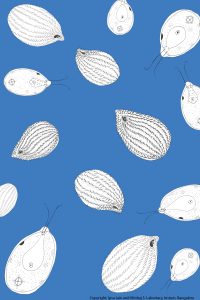Cytoskeleton proteins are highly conserved during evolution. This allows the use of lower organisms as model systems to study protein structure, functions, and interactions. Chlamydomonas, a flagellate and Tetrahymena, a ciliate are two protists routinely used in the laboratory for understanding various aspects of microtubules biology. Both these organisms depend on microtubules for their motility. Several mutants have helped identification of proteins important in microtubule assembly, growth and movement. Microtubules and associated proteins are routinely purified biochemically form these organisms.
This work by Ipsa Jain and Minhaj S. laboratory, Instem, Bangalore is licensed under a Creative Commons Attribution-NonCommercial 4.0 International License


